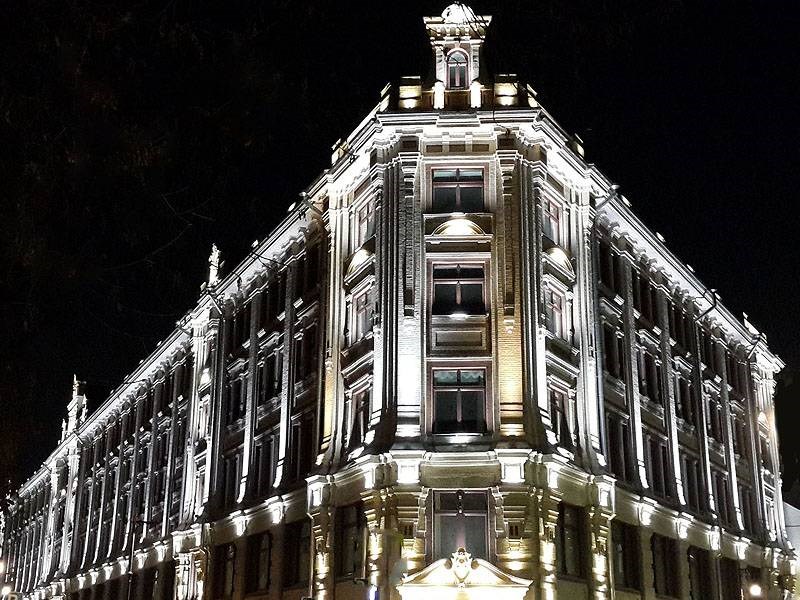The transposition of the conceived lighting design on the massive building required a remarkable number of lighting fixtures: 35 units of RUBY MC with medium optics in dynamic white configuration were used to light up the spaces between the windows up to the upper cornice. These medium-sized rounded spotlights, with in-built electronics and power supply unit, are ideal for spot lighting and wall grazing owing to the wide selection of exchangeable optics groups available, ranging from spot aperture beams to wide distribution. Moreover, their homogeneous light emission allows a perfect distribution on a rough surface like the silicate brick walls of the palace.
Almost 50 units of the ultra compact spotlight fixture MICRO-CLIP MK2 in warm white with wide or narrow optics have been chosen to enhance the crenellation of the upper cornice, which now stands out amazingly. 30 units of the graphic light shaper EKLIPSE in warm white color configuration with elliptical optics have been used to softly enhance the arches overlooking the larger panoramic windows on the upper floor. Designed for specific application on windowsills, EKLIPSE highlights the inner frames or the outer edges of windows, balconies or repeating architectural elements, while designing appealing optical effects on residential, public, historical or artistic building façades. It can also be easily adjusted according to the different inclinations of windowsills in order to boost its performance.
14 ORPHEO S with double emission shaft fitted with narrow optics (downwards) and wide optics (upwards) have been installed onto the columns of the lower level. ORPHEO S is a wall-mount diffuser whose single or double vertical light shafts provide linear edge and corner applications with an elegant accent lighting effect that re-defines exterior façades with distinguished and consistent light strokes. The double light shaft version, on request, can feature independent LED and optics configurations combined with fully autonomous control of each LED cluster, enhancing absolute design flexibility.
Moreover, in order to complete the lighting scheme with grazing effects of white light, almost 100 units of PARADE S-DW-20 linear bars with elliptical or elliptical wide optics were installed in fixed positions to enhance the façade decorations, the pediments and cartouches, the lower basis of the upper columns surrounding all the building, the upper turrets, and further decorative elements. The vast majority of lighting fixtures installed are DMX controllable or dimmable.
